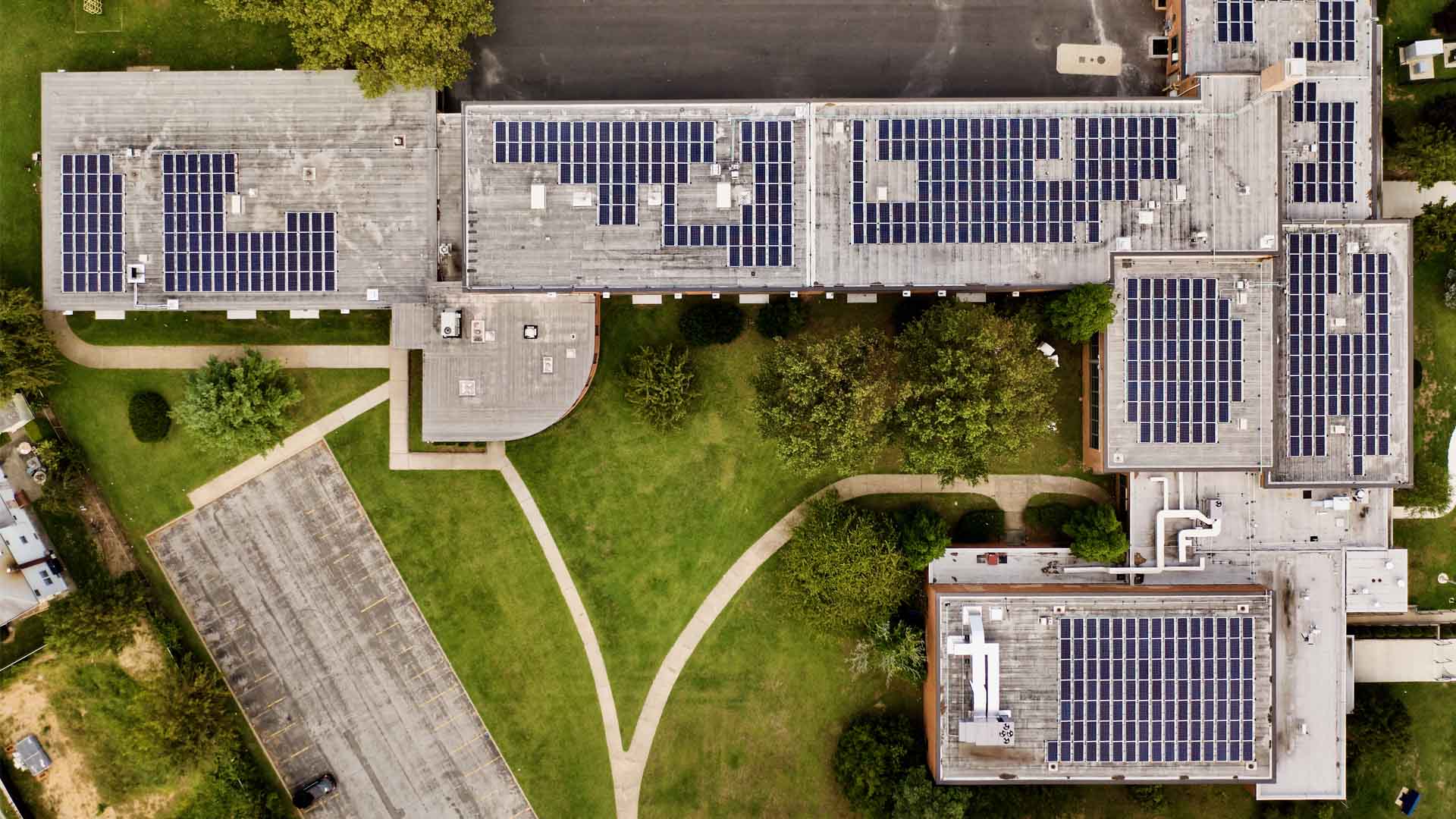Rooftop Solar: An Immediate Opportunity for the Inflation Reduction Act

It’s a new day for clean energy. With the passage of the Inflation Reduction Act, there’s never been more momentum for a large-scale transition to renewables in the United States. Now, the detailed and difficult work begins as we identify opportunities to translate new technologies and more robust incentives into an infrastructure that can sustainably support our society.
One of the more significant challenges is ensuring power can get from the point where it’s generated to the point where it needs to be used. How does electricity make it from sprawling solar farms in rural areas to energy-hungry urban centers, or from offshore wind farms miles beyond the coast to the residential communities that will ultimately put that power to use? It’s complicated. Wires and other physical infrastructure have to be established in order to transport energy across long distances. It’s a process that can be expensive, time-consuming and frequently burdened by administrative hurdles like land use and ownership.
There usually aren’t silver bullet solutions for issues this significant and complex. But this time, there is! Rooftop solar (literally) brings a renewable energy source right to you, eliminating the need for long-distance wires and other complicated infrastructure demands. At the same time, environmental impact related to the installation of a new project is minimized by putting the unused space on top of existing buildings to good use.
By its very nature, rooftop solar addresses the problems that would typically need to be solved when implementing other renewable energy sources—here, the solutions are built in. Once a building is connected to a rooftop solar installation, it receives power from an on-site array of solar panels. Instead of traveling hundreds of miles from start to finish, power generated by rooftop solar is put to use in the same place where it’s created. The need for any long-distance wiring is eliminated, costs are reduced, and administrative red tape is avoided. This can be a defining difference between renewable energy projects that are put in place immediately and those that face years of complications before they’re able to begin.
Rooftop solar also has an answer to the challenge of identifying suitable spaces where renewable energy projects can exist. (In fact, the answer is right in the name.) There are hundreds of millions of square feet worth of rooftops in New York City alone. While some of that real estate isn’t available or amenable to housing solar panels, there are a lot of spaces that fit the need perfectly. As the demand for renewable energy continues to grow, more physical space will be required to accommodate solar arrays of all sizes. Finding room on our existing rooftops is a vastly preferable alternative to converting our wild, undeveloped lands into swaths of space for solar panels. Innumerable amounts of rooftops across the country are primed to host solar installations and keep our natural environments undisturbed.
As long as we’re talking about our buildings, there’s another element contributing to the power of rooftop solar that shouldn’t be discounted. We’ve written before about the significant environmental footprint of buildings that already exist in our urban centers. By using your rooftop space to host an on-site solar array, you’re turning an underutilized part of your building into a facility for sustainable power generation, putting it to work as an asset in the fight for a healthier planet. (You’ll also be minimizing new construction needed to establish a renewable energy project, and that’s an environmentally friendly act in itself!)
Finally, rooftop solar taps into the significant benefits of energy diversification. The creation of new local energy sources leads to fewer people relying on a centralized grid that can be susceptible to overuse and failure. By bringing more small-scale energy generation to more locations—like solar arrays on rooftops all across our cities—we’re contributing to a stronger and more reliable future for our energy systems. The single step of establishing on-site power generation reduces your vulnerability to outages and relieves pressure from our larger grid. In short, diversifying your energy supply via rooftop solar can be a big advantage to you and our power systems more broadly.
To be clear, it’s going to take a lot of people and a lot of technologies to make a full transition to renewable energy. Wind turbines, large-scale solar farms and other approaches all have a role to play. But the promise of rooftop solar really can’t be overstated. It allows us to take immediate action toward addressing an absolutely urgent problem. It lowers costs, avoids time-consuming infrastructure improvements, and generates energy in the very same place it’ll be put to use. It’s key to unlocking the full power of the game-changing Inflation Reduction Act, requiring less time and money along the way.
Let’s put this supercharged solution to work as quickly and often as we can.


%20(29).jpg?width=352&name=Untitled%20(1920%20x%201080%20px)%20(29).jpg)
